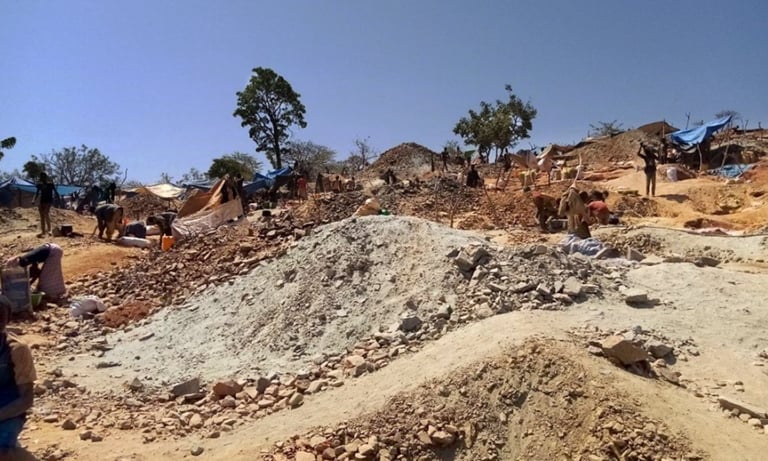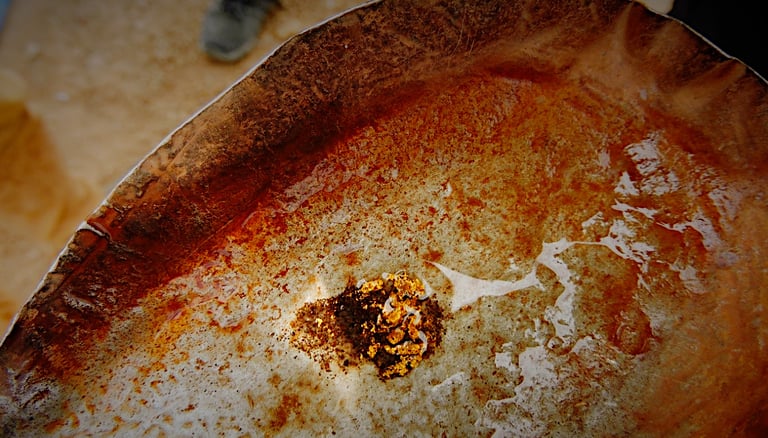Panthera Resources Plc (LON:PAT), the diversified gold exploration and development company with assets in West Africa and India, has announced that drilling has commenced at the Kalaka Project in Mali for a planned 2,500 metre air-core (AC) drilling programme. Kalaka is held by our associated company, Moydow Holdings Ltd.
Highlights
· 2,500 metre AC drill programme commenced at Kalaka
· Up to five of the twenty targets identified will be drill tested
· Drill targets have been selected on their potential to host higher grades
· Assay results expected from late December 2021
A PDF version of the announcement, inclusive of images, can be found on the Company’s website or by following the links below:
http://www.rns-pdf.londonstockexchange.com/rns/9649S_1-2021-11-19.pdf
pantheraresources.com/news/regulatory-news/
Project Background
The Kalaka project is located over the regional scale Banifin Shear Zone in southwestern Mali, approximately 200km southeast of the capital city Bamako.
The + 7Moz Morila gold mine is located approximately 70km to the north and the plus 6Moz Syama gold mine is located approximately 100km to the southeast.
Considerable work has been undertaken on the project by previous explorers Anglogold Exploration and Golden Spear Mali SARL (current JV partner) including:
· 7,349 soil samples
· 909 line km airborne magnetics and EM
· 9,846m RAB drilling in 235 drill holes
· 3,095m AC drilling in 80 drill holes
· 4,258m RC drilling in 39 drill holes
· 3,753m diamond drilling in 18 drill holes
This work culminated in the identification of the K1A prospect, a large, low grade gold deposit with drill intercepts over 700m of strike including:
· 249.3m @ 0.54g/t Au from 52m (to end of hole) including 8m @ 3.17g/t Au from 107m
· 191.8m @ 0.52g/t Au from 9m (to end of hole) including 4m @ 2.47g/t Au from 196m
· 176.4m @ 0.49g/t Au from 24m (to end of hole) including 8m @ 1.83g/t Au
Several additional targets were also identified, generally with gold mineralisation between 0.3 and 0.9g/t Au, suggesting very large tonnages of low grade gold mineralisation are likely to be present.
Work by Panthera Resources and its partners resulted in the realisation that the soil sampling is only effective in a few of the areas tested, due to transported laterite and alluvium masking the geochemical response of bedrock in much of the area. It was also found that the K1A prospect is defined very closely by a chargeability high obtained in a test IP survey. The IP survey area was subsequently expanded twice and now covers most of the southern half of the tenement area, where surface geochemistry is generally not very useful.
This work has defined twenty chargeability highs, many of higher intensity than that over K1A. These are all considered to be good drill targets and the higher intensity suggests more sulphides and potentially higher gold grades due to more intense alteration. This shows a zone of interpreted black graphitic shales defined by very high conductivity, with areas on either side with lower conductivity that are interpreted as non-graphitic metasediments and/or volcanics. A large, roughly oval shaped zone of low conductivity, low chargeability and generally moderate resistivity with margins of high resistivity is interpreted as a granitoid intrusion. The metasediments appear to wrap around this and several areas of interpreted pressure shadows (favourable structural sites for gold mineralisation) are noted, particularly at Targets 1 to 5.
The main targets being tested by the current drill programme are summarised below:
| Target 1: | A discrete, high intensity chargeability high that appears to cut across interpreted stratigraphy and is located within the pressure shadow of an interpreted granitoid intrusion. It has low resistivity and moderate conductivity suggesting some graphite or more massive sulphides may be present. A zone of intense abandoned artisanal mining activity consisting of over 1000 shafts targeting the base of laterite and top of weakly weathered bedrock over an area of about 1000m by 200m. This is sub-parallel to but slightly offset from the chargeability high and it is interpreted that the mineralisation targeted by the artisanal miners was transported from the area of the chargeability high by an old river channel underneath the laterite or by creep downslope. This will be the first target tested with drill traverses covering both the old workings and the chargeability high. |
| Target 2: | This is a northerly, offset continuation of Target 1. |
| Target 3: | A plus 500m long chargeability high in the interpreted pressure shadow of a granitoid intrusion. This also appears to cut across interpreted stratigraphy suggesting it is not simply a sulphidic stratigraphic package. It has low to moderate associated resistivity and conductivity. Previous shallow RAB drilling has tested the northern part of the target with intercepts of 9m @ 0.31g/t Au from 13m and 34m @ 0.22g/t Au from the surface showing broad zones of low-grade mineralisation are present. The area closer to the interpreted granite may be a better structural zone and this will be the focus of the drilling. |
| Target 4: | A very similar anomaly to Target 3, this has no previous drilling but does have an associated soil anomaly. A line of RAB drilling approximately 200m north of the target returned 2m @ 1.19g/t Au from 1m. |
| Target 5: | A 2,300m long chargeability high is located along the western contact of the interpreted graphitic shale package with the non graphitic metasediments where the package wraps around the interpreted granitoid. The majority of the graphitic shale package is not highly chargeable and hence this is considered unlikely to have a stratigraphic origin. There is no previous drilling into this Target and it is located in an area where soils are considered unlikely to be effective. |
Commenting on the announcement, Mark Bolton, Managing Director of Panthera said:
“Significant low grade gold mineralisation has previously been identified at the Kalaka Project, with drill intercepts of 249.3m @ 0.54g/t Au from 52m (to end of hole) including 8m @ 3.17g/t Au from 107m at the K1A prospect.
This mineralisation has a strong Induced Polarisation (IP) chargeability high associated with it due to disseminated sulphides in the alteration zone.
Recent extensions to the IP survey have resulted in 20 other chargeability anomalies being identified and up to five of these will be tested in the current drilling programme.
One of the strongest chargeability responses occurs at Target 1 which is slightly offset from a large zone of artisanal workings targeting the base of laterite over a 1000m by 200m area. This will be the first drilling into either the area of workings or the chargeability high, so results will be eagerly awaited.
Target 2 is a northerly offset continuation of Target 1. The other targets being testing will include Target 5 and possibly Targets 3 and 4 depending on the depth of the drill holes.”







































